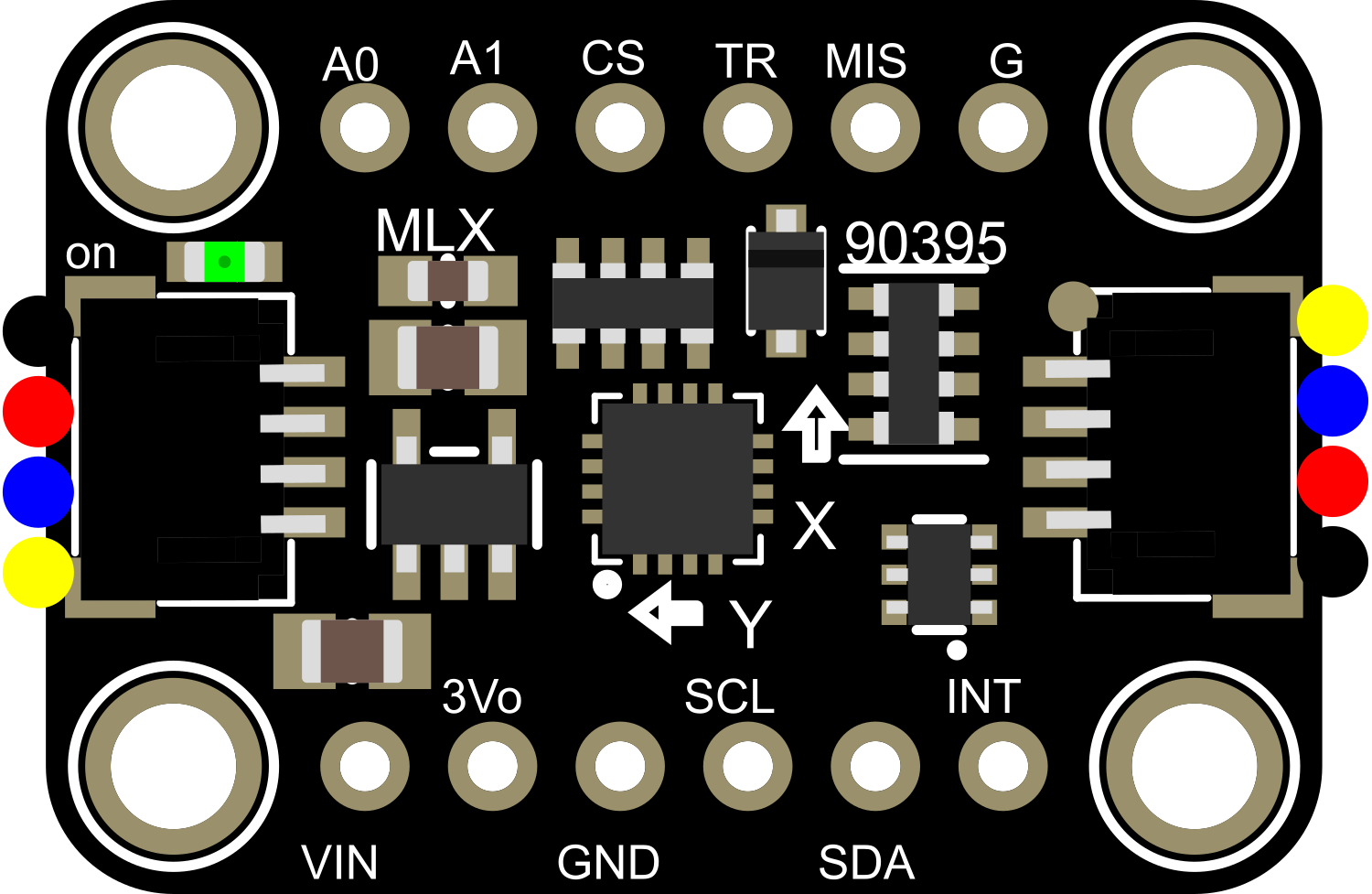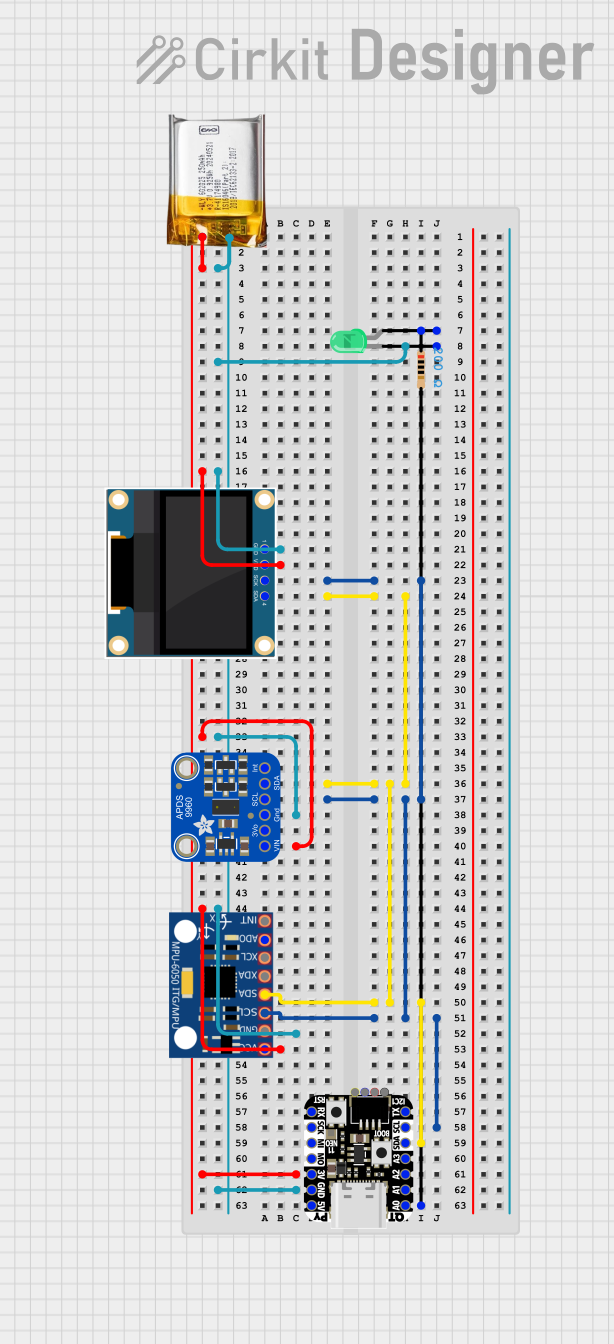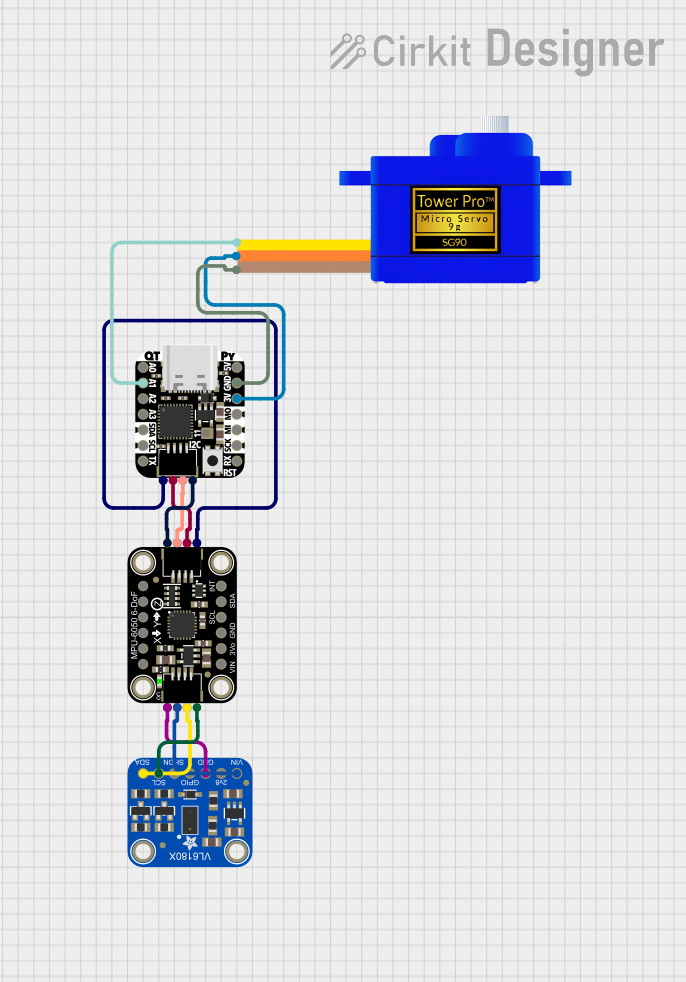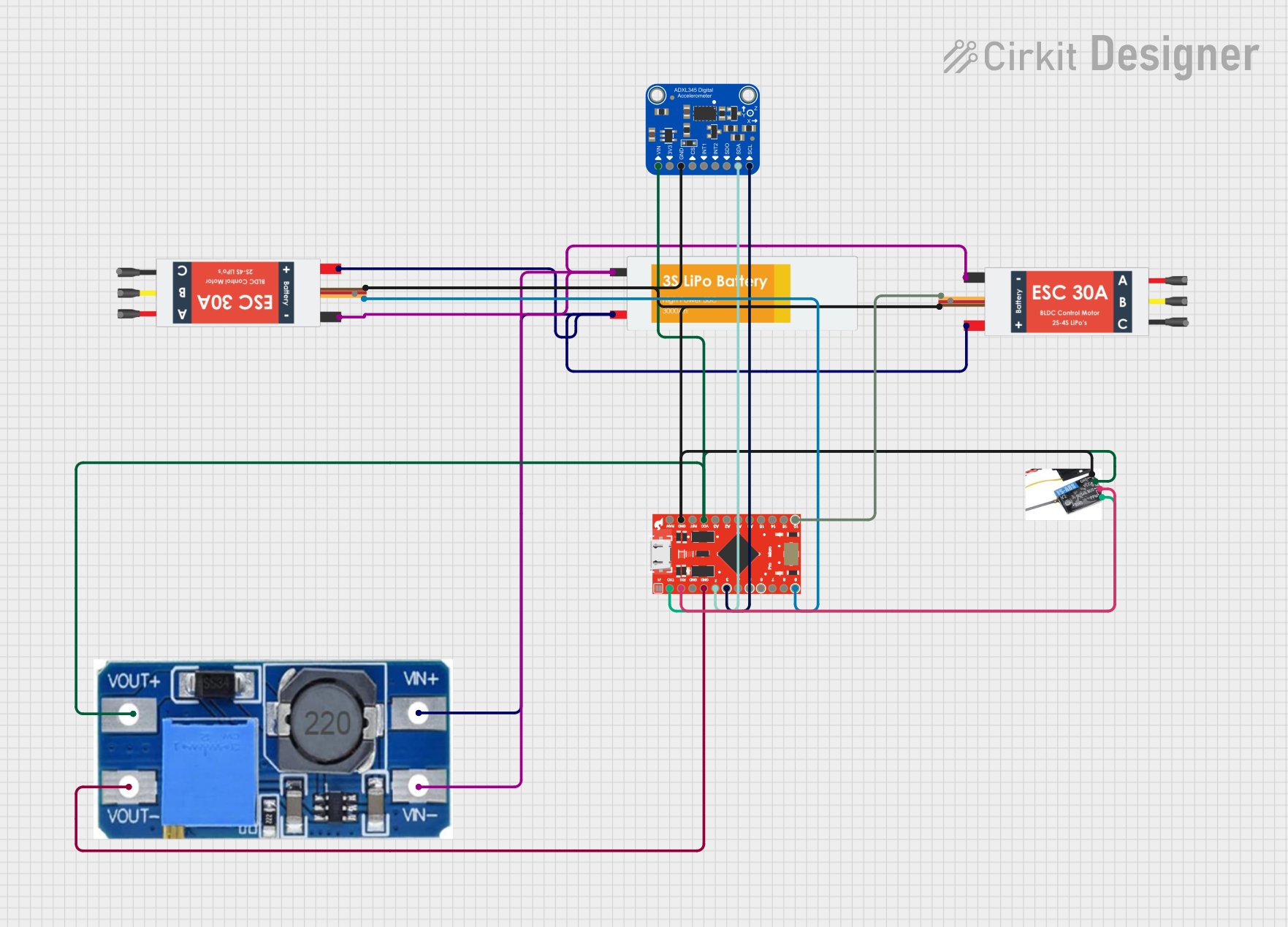
How to Use Adafruit MLX90395: Examples, Pinouts, and Specs

 Design with Adafruit MLX90395 in Cirkit Designer
Design with Adafruit MLX90395 in Cirkit DesignerIntroduction
The Adafruit MLX90395 is a sophisticated magnetometer module capable of measuring magnetic fields in three dimensions. Utilizing the Melexis MLX90395 magnetic field sensor, this module offers precise and reliable readings, making it an ideal choice for a wide range of applications including compass navigation, position sensing, and motion detection.
Explore Projects Built with Adafruit MLX90395

 Open Project in Cirkit Designer
Open Project in Cirkit Designer
 Open Project in Cirkit Designer
Open Project in Cirkit Designer
 Open Project in Cirkit Designer
Open Project in Cirkit Designer
 Open Project in Cirkit Designer
Open Project in Cirkit DesignerExplore Projects Built with Adafruit MLX90395

 Open Project in Cirkit Designer
Open Project in Cirkit Designer
 Open Project in Cirkit Designer
Open Project in Cirkit Designer
 Open Project in Cirkit Designer
Open Project in Cirkit Designer
 Open Project in Cirkit Designer
Open Project in Cirkit DesignerCommon Applications and Use Cases
- Electronic compasses for navigation
- Metal detection for security systems
- Position and motion sensing in robotics
- User interface controls (e.g., jog wheels, knobs)
- Magnetic field mapping and visualization
Technical Specifications
The Adafruit MLX90395 magnetometer module is characterized by the following technical specifications:
| Specification | Value/Description |
|---|---|
| Operating Voltage | 2.2V to 3.6V |
| Current Consumption | 100 μA (typical) |
| Measurement Range | ±5 mT per axis |
| Resolution | 0.161 μT |
| Communication | I2C (up to 1 MHz), SPI (up to 10 MHz) |
| Operating Temperature | -40°C to 85°C |
| Dimensions | 17.8mm x 15.3mm x 2.6mm (LxWxH) |
Pin Configuration and Descriptions
| Pin Number | Name | Description |
|---|---|---|
| 1 | VIN | Supply voltage (2.2V to 3.6V) |
| 2 | GND | Ground |
| 3 | SCL | I2C clock (also acts as SPI clock) |
| 4 | SDA | I2C data (also acts as SPI MOSI) |
| 5 | SDO | SPI data output (also acts as SPI MISO) |
| 6 | CS | SPI chip select (active low) |
| 7 | INT | Interrupt pin (active low) |
Usage Instructions
Integrating with a Circuit
To use the Adafruit MLX90395 magnetometer module in a circuit:
- Connect the VIN pin to a 2.2V to 3.6V power supply.
- Attach the GND pin to the common ground in your circuit.
- For I2C communication, connect the SCL and SDA pins to the corresponding I2C clock and data lines on your microcontroller.
- For SPI communication, connect SCL, SDA, and SDO to the SPI clock, MOSI, and MISO lines respectively, and the CS pin to a digital output for chip select.
Important Considerations and Best Practices
- Ensure that the power supply is within the specified voltage range to prevent damage.
- Use pull-up resistors on the I2C lines if they are not already present on the microcontroller board.
- Keep the magnetometer away from strong magnetic fields that exceed the measurement range.
- For accurate readings, calibrate the magnetometer in the final installation environment.
Example Code for Arduino UNO
Below is an example code snippet for interfacing the Adafruit MLX90395 with an Arduino UNO using the I2C protocol. Ensure you have installed the appropriate Adafruit MLX90395 library before uploading the code to the Arduino.
#include <Wire.h>
#include <Adafruit_MLX90395.h>
Adafruit_MLX90395 mlx;
void setup() {
Serial.begin(9600);
// Initialize the MLX90395
if (!mlx.begin_I2C()) {
Serial.println("Failed to find MLX90395 chip");
while (1) { delay(10); }
}
Serial.println("MLX90395 Found!");
}
void loop() {
mlx.readData();
// Print out the X, Y, Z values
Serial.print("X: "); Serial.print(mlx.x, 4); Serial.print(" uT, ");
Serial.print("Y: "); Serial.print(mlx.y, 4); Serial.print(" uT, ");
Serial.print("Z: "); Serial.print(mlx.z, 4); Serial.println(" uT");
// Delay between readings
delay(500);
}
Troubleshooting and FAQs
Common Issues
- No data or communication errors: Ensure that the wiring is correct and that the correct voltage is applied. Check for proper soldering and connections.
- Inaccurate readings: Calibrate the sensor, and make sure it is not near any strong magnets or ferrous materials that could affect the readings.
Solutions and Tips for Troubleshooting
- Sensor not detected: Check the I2C or SPI connections and ensure that the correct address or chip select pin is being used.
- Fluctuating readings: Implement a software filter or averaging algorithm to stabilize the readings.
FAQs
Q: Can the MLX90395 be used with a 5V microcontroller? A: Yes, but ensure that the VIN pin is connected to a voltage within the 2.2V to 3.6V range. Use level shifters for I2C or SPI lines if necessary.
Q: How can I calibrate the magnetometer? A: Calibration typically involves rotating the sensor in all three axes and using software to map the raw readings to a calibrated scale.
Q: What is the maximum sampling rate of the MLX90395? A: The maximum sampling rate depends on the communication protocol used (I2C or SPI) and the specific settings of the sensor. Refer to the datasheet for detailed timing information.
This documentation provides a comprehensive guide to using the Adafruit MLX90395 magnetometer module. For further details and advanced usage, consult the datasheet and additional resources provided by Adafruit.